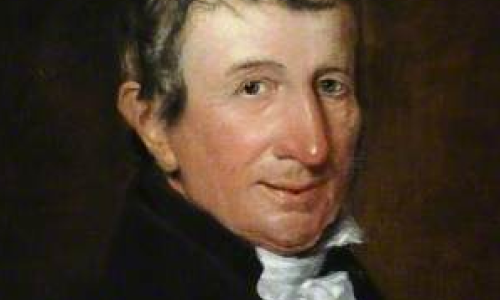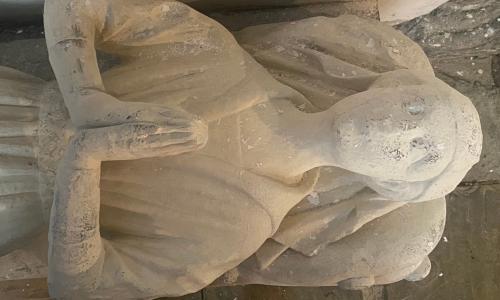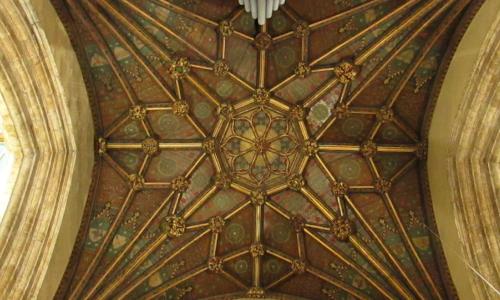One very exciting find at Castle Street was the tomb of John and Frank Appleyard, builders and bricklayers: a grand brick tomb, to showcase their craftsmanship. John had a coffin plate with his name, and Frank was buried in three coffins, two with name-plates. There were also imprints in the the vault's plaster lining of tassels, perhaps the ties of a Masonic apron draped over the coffin.
The large Appleyard family had come to Hull from Selby after their father, a labourer and woodman, died in 1796. Frank was only 13, and so his big brother John, then 29, brought him up and trained him. They formed a team with a family of stonemasons from York – the Earles – working for the architect Charles Mountain jnr. Together, they built some of Regency and early Victorian Hull’s greatest buildings, which we can still see:
- Smith's Bank, at the corner of Trinity House Lane and Whitefriargate (now mainly occupied by Boyes);
- Almshouses for Trinity House on Posterngate and Princes Dock side (now Carmelite House and Rolland House);
- The former Pilot Office;
- The Assembly Rooms (now Hull New Theatre);
- St Charles Borromeo Roman Catholic Church.
Frank also carried out many repairs and alterations to brickwork at the Minster. He was a leading Freemason, and there are two copies of a portrait bust of him in Minerva Lodge (a building he had also worked on). These were sculpted by his eldest daughter Mary’s husband, Thomas Earle – the son of his working partner, John Earle. Frank and his wife Elizabeth (née Clark) had several daughters, who made prosperous marriages, and one son, John.
Frank built the Castle Street tomb for John in 1828. His own later years were marked by tragedy. In 1848, his 9-year-old grandson, Frank, was killed by a runaway horse and cart while playing in the street. His father – Frank’s only son, John – died in 1849. Frank himself died 6 months later, aged 66, of a stomach ulcer or cancer. His sister Elizabeth (Mrs Santon) and his widow Elizabeth were later buried in the same tomb. Because his wife died several years after Castle Street had been closed, government permission was needed to reopen the vault for her.
Frank’s son-in-law, Thomas Earle, made a marble wall-monument to Frank and John in the Minster’s South Choir Aisle. The name of Elizabeth, Frank’s wife, was added to it when she died in 1867. Thomas Earle’s own monument faces it across the Chancel.
At the bottom left of the sculpture you can clearly see the mason's "plate jewel" which was awarded to Frank when he stepped down from being First Principal of the Lodge. Next to it rest a roll of drawings and some builder's drawing tools.
This monument is undergoing repairs and cleaning in the North Choir Aisle. The coffin furniture and breast plates of Frank and John Appleyard can be viewed in the Trinity Rooms collection cabinet.




